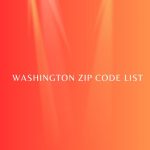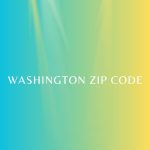New York City, a bustling metropolis, is known for its diverse neighborhoods and iconic landmarks. But behind the scenes, ZIP codes play a crucial role in organizing this vast urban landscape. Let’s dive into the fascinating world of New York ZIP codes and explore how they shape the city.
What is a ZIP Code?
ZIP codes, short for “Zone Improvement Plan” codes, are a system of postal codes used by the United States Postal Service (USPS) to ensure efficient mail delivery. Introduced in 1963, ZIP codes have since become an integral part of the American addressing system. Each code typically consists of five digits, with an optional four-digit extension for more precise locations.
Structure of New York ZIP Codes
New York ZIP codes follow the general format used across the United States. The first digit represents a group of U.S. states, the next two digits represent a region within that group, and the final two digits represent a specific post office or area. For example, in the ZIP code 10001, “10” refers to a section of New York City, and “001” designates a specific area within that section.
Manhattan ZIP Codes
Overview of Manhattan
Manhattan, the heart of New York City, is known for its towering skyscrapers, bustling streets, and iconic landmarks like Times Square and Central Park. It is divided into several distinct neighborhoods, each with its own unique ZIP codes.
Key ZIP Codes in Manhattan
Lower Manhattan
- 10004: Covers the Financial District, including Wall Street and Battery Park.
- 10007: Encompasses parts of Tribeca and the World Trade Center area.
Midtown Manhattan
- 10018: Includes the Garment District and parts of Hell’s Kitchen.
- 10022: Covers the Midtown East area, including Sutton Place.
Upper Manhattan
- 10025: Spans the Upper West Side, including parts of Columbia University.
- 10029: Covers East Harlem and parts of the Upper East Side.
Brooklyn ZIP Codes
Overview of Brooklyn
Brooklyn, known for its cultural diversity and vibrant arts scene, is the most populous borough of New York City. It boasts a mix of historic brownstones, trendy neighborhoods, and scenic waterfronts.
Key ZIP Codes in Brooklyn
Williamsburg
- 11211: Encompasses much of Williamsburg, a trendy area known for its hipster culture and nightlife.
Downtown Brooklyn
- 11201: Covers the downtown area, including Brooklyn Heights and DUMBO.
Park Slope
- 11215: Includes Park Slope, known for its family-friendly atmosphere and historic architecture.
Queens ZIP Codes
Overview of Queens
Queens, the largest borough by area, is celebrated for its ethnic diversity and rich cultural heritage. It is home to a wide range of neighborhoods, each with its own distinct character.
Key ZIP Codes in Queens
Astoria
- 11101: Covers parts of Astoria and Long Island City, known for their vibrant arts scenes.
Flushing
- 11354: Encompasses much of Flushing, a bustling neighborhood with a large Asian community.
Long Island City
- 11109: Includes parts of Long Island City, an area undergoing rapid development.
Bronx ZIP Codes
Overview of the Bronx
The Bronx, the northernmost borough of New York City, is known for its rich history, diverse communities, and landmarks like Yankee Stadium and the Bronx Zoo.
Key ZIP Codes in the Bronx
Riverdale
- 10471: Covers Riverdale, a leafy residential area with a suburban feel.
Belmont
- 10458: Encompasses Belmont, known for its strong Italian heritage and the Bronx Zoo.
South Bronx
- 10451: Includes parts of the South Bronx, an area with a rich cultural history.
Staten Island ZIP Codes
Overview of Staten Island
Staten Island, the least populated borough, offers a more suburban lifestyle with its parks, beaches, and historic sites. It’s accessible by ferry from Manhattan.
Key ZIP Codes in Staten Island
St. George
- 10301: Covers St. George, the neighborhood near the Staten Island Ferry terminal.
Tottenville
- 10307: Encompasses Tottenville, a residential area at the southern tip of Staten Island.
Great Kills
- 10308: Includes Great Kills, known for its marina and parks.
Special ZIP Codes in NYC
Certain large organizations, landmarks, and government buildings in NYC have their own unique ZIP codes. For example, the Empire State Building has its own ZIP code, 10118, due to the volume of mail it receives.
How ZIP Codes Affect Daily Life in NYC
Mail Delivery
ZIP codes are essential for efficient mail delivery, ensuring that letters and packages reach their intended destinations promptly.
Property Prices
ZIP codes can significantly impact property prices. Some areas with desirable ZIP codes are associated with higher real estate values due to their location, amenities, and perceived status.
Demographic Data
ZIP codes are also used for gathering demographic data, helping to inform public policy, business decisions, and community services.
ZIP Codes and Real Estate
Real Estate Trends by ZIP Code
Real estate trends can vary widely by ZIP code. Areas with good schools, low crime rates, and convenient transportation options often see higher demand and property values.
Popular ZIP Codes for Homebuyers
Certain ZIP codes, like 10023 on the Upper West Side or 11215 in Park Slope, are particularly popular among homebuyers due to their amenities and community appeal.
ZIP Codes and Business
Business Trends by ZIP Code
Businesses often choose locations based on ZIP codes that align with their target markets. High foot traffic areas like 10036 in Times Square are prime spots for retail and entertainment businesses.
Popular ZIP Codes for Businesses
ZIP codes like 10001 in Chelsea, known for its tech startups, or 11217 in Brooklyn, popular for its creative industries, are hotspots for businesses.
ZIP Codes and Tourism
Tourist Attractions by ZIP Code
Many of NYC’s top tourist attractions can be identified by their ZIP codes. For example, 10019 includes landmarks like Central Park South and Columbus Circle.
Navigating NYC as a Tourist
Understanding ZIP codes can help tourists navigate the city more effectively, allowing them to plan their visits and accommodations based on proximity to attractions.
Finding Your ZIP Code in NYC
Tools and Resources
There are several tools and resources available for finding ZIP codes in NYC. Websites like the USPS ZIP Code Lookup provide easy ways to search for ZIP codes based on addresses.
Using the USPS Website
The USPS website offers a simple ZIP Code Lookup tool where you can enter an address to find the corresponding ZIP code.
Conclusion
ZIP codes are more than just numbers; they are an integral part of New York City’s infrastructure, influencing everything from mail delivery to real estate trends. Understanding these codes can provide valuable insights into the city’s diverse neighborhoods and vibrant communities.
FAQs
How are ZIP codes assigned in New York?
ZIP codes in New York are assigned based on geographic regions and population density to ensure efficient mail delivery.
Can ZIP codes change over time?
Yes, ZIP codes can change due to factors like urban development, population growth, and changes in postal routes.
Why do some buildings have their own ZIP codes?
Large buildings or organizations may have their own ZIP codes to handle the high volume of mail they receive.
How can I find the ZIP code for a specific address in NYC?
You can use the USPS ZIP Code Lookup tool online by entering the address to find the corresponding ZIP code.
Are there any areas in NYC without a ZIP code?
Every area in NYC is covered by a ZIP code, although some large parks or undeveloped areas might not have specific codes for mail delivery.










